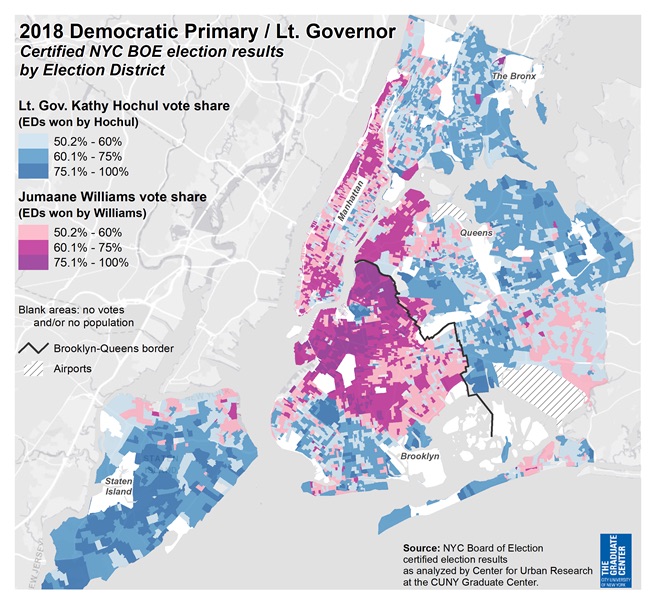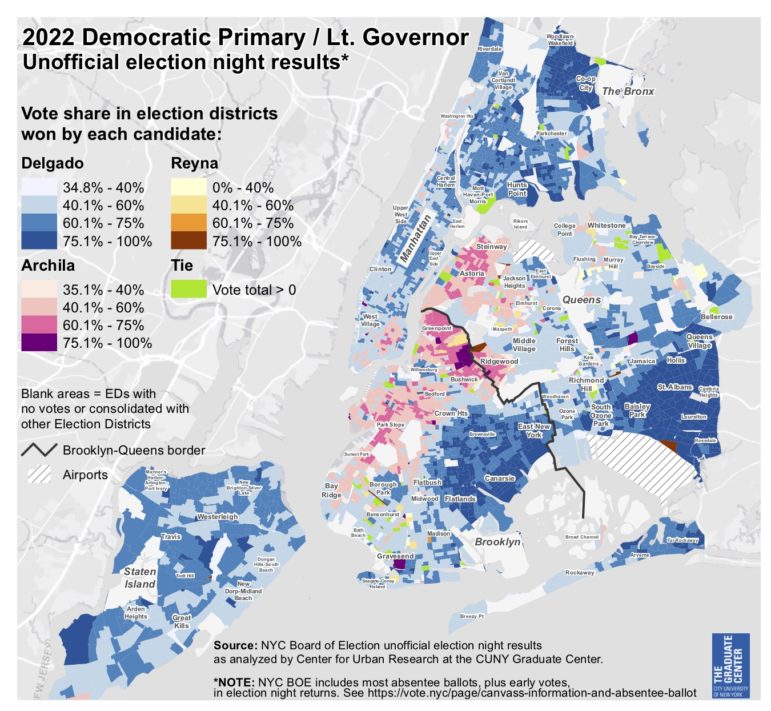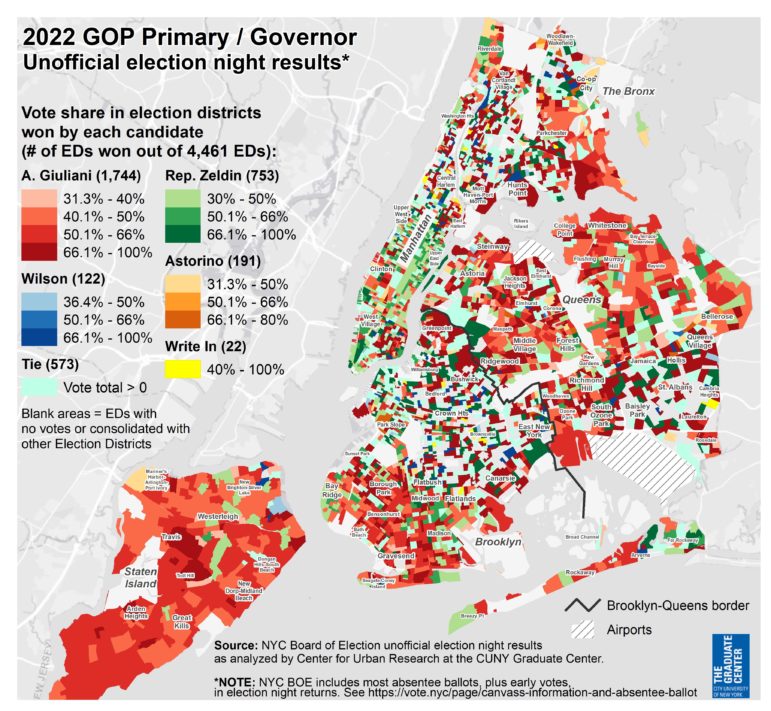
The Center for Urban Research at the CUNY Graduate Center
Results by election district in the Democratic June primary for governor.Less than 500,000 city residents cast ballots in last week’s primary election for governor, nearly half the number of voters compared to the last gubernatorial primary in September 2018.
Incumbent Gov. Kathy Hochul cinched more than 60 percent of Democratic votes in the five boroughs, meaning she’ll be on the ballot in November against Republican candidate Lee Zeldin, who won statewide but trailed Andrew Giuliani among city voters.
Who did most of your neighbors cast votes for? NYC Election Atlas, a project of The Center for Urban Research at the CUNY Graduate Center, mapped the unofficial primary results for each of the city’s election districts in races for the Democratic and Republican gubernatorial candidates, as well as lieutenant governor.
The project has created maps and graphs for city election results dating back more than two decades, an effort to identify patterns in electoral and demographic trends across the city’s neighborhoods, according to Steve Romalewski, director of the CUNY Mapping Service.
This year’s Democratic race for governor was of interest in part, he said, because it allowed them to compare voter support for Kathy Hochul and her challenger from the left, Public Advocate Jumaane Williams, to the 2018 election, when the same two candidates squared off in the race for lieutenant governor.


Williams fared better against Hochul in several neighborhoods four years ago compared to this time around, earning the majority of votes across most of Manhattan—with strong support uptown in particular—as well as western Queens, the north shore of Staten Island and a larger swath of Brooklyn.
“Whereas, you know, this time around he barely did well outside of that part of Northern Brooklyn and Bed-Stuy,” Romalewski said.
“Hochul did okay in the strongly democratic areas and also predominantly Black areas [like] Southeast Queens and much of the upper Bronx, like Wakefield and Co-Op City, but her lieutenant governor running mate Delgado did even better in those areas,” he added, referring to former Congressman Antonio Delgado, who joined Hochul’s administration in May after former lieutenant governor Brian Benjamin was charged with bribery.

The Center for Urban Research at the CUNY Graduate Center
Results by election district in the Democratic June primary for lieutenant governor.
Ana María Archila, likewise, had a wider spread of electoral support than her running mate Williams, earning the majority of votes in a number of neighborhoods in Queens like Astoria and Jackson Heights as well as further south into Brooklyn.
See voter turnout for the GOP candidates for governor in the map below, and click here to find all of the NYC Election Atlas’ maps for election results dating back to 2001.

The Center for Urban Research at the CUNY Graduate Center
Results by election district in the June primary for GOP governor









One thought on “See Who Your NYC Neighborhood Voted for in Primary for Governor”
Who vote dead people or illegal. Thought Cuomo was bad . She now takes the ticket